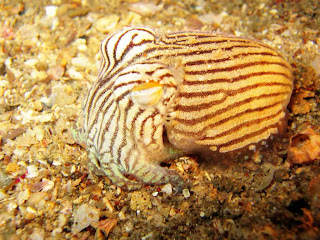Many facilities in the hospitals, such as IV poles, sinks or bed rails etc, may seem clean and harmless. However, on these, there are millions, or probably billions of harmful bacteria and micro organisms that contribute to hospital-acquired infections, which may be fatal for the patients. This infection is also one of the main illness that causes death in United States, as 2 million people are infected every year. Studies conducted by UA research study shows that disease-causing organism can survive on stainless shell surfaces for two weeks, while 99.9% die within two hours on surfaces that contain at least 60% copper. Hence, copper surface can be very efficient in preventing the organisms from causing infections
in the hospitals.
Hence, Estelle and his fellow engineers have developed copper alloys for health care industry and also co operated with manufactures to gear up for producing copper alloy products, which can help to make the project more efficient. They also received the EPA certification for the antimicrobial effects of copper so that more manufacturers could tell the others the potential benefits of using these coper- alloy based products. Estelle also conducted a pilot test at Ronald McDonald House in Charleston, S.C, in order to test out whether the project was indeed useful. He redesigned the house so that most of the houses's frequently touched tools and furnitures, such as sinks, kitchen tables and chair arms, were made out of copper alloys. The results show that, this has created a safer environment for families, children and staff as there were 94% less bacterias than before. In addition, it also helped out the manufacturers, for example, the Elkay company, to advertise their copper alloy-based products to hospitals.
Now, his next challenge was to persuade the hospitals to replace their previous surfaces with copper alloy ones. Many hospitals have been considering this changeover, since this has been proven to be quite effective and they also received the EPA approval. Another reason is due to reduced wasted money on the infections. Every year in USA, $35 billion to $45 billion are spent each year to treat hospital-acquired infections, but they have been proven ineffective as the chances of survival is very low about 1 out of 5. Thus, if the new changes are implemented and the hospitals changes their surfaces to copper surfaces, the number of hospital acquired infections cases would significantly drop about 50%, therefore reducing mortality rate as well as the financial costs. Estelle claims that this way the hospital do not have to manually ask the patients to take actions to prevent infection, and there is no need for maintenance for these surface cleaning procedures.
Here is a video of how copper surface can help get rid of germs.
Here is a video of how copper surface can help get rid of germs.
Before I read this article, I never realized the effects of copper on bacteria and other micro organisms. When I first read the title of the article, I wondered, " how could a metal prevent bacteria from attaching onto the surface?" However, after reading through, I was surprised by how effective copper was in preventing bacterias. When the other surfaces such as wood allows harmful micro organisms to survive for 2 days, copper kills 99.9% of the bacteria within 2 hours. The idea of how this copper could be used to cure the hospital acquired infection was also unexpected, and I think that this is actually very creative.
I did not know what was Hospital Acquired Infection at first. Hospital acquired infection, according to my research done after reading this article, was an infection that patients get during their stay at the hospital, due to some micro organisms that exist on hospital facilities, hospital staffs, or other patients. It was also very astonishing that this was the 4th most deadly disease in United States. I was disappointed by the hospitals, how they did not take care of the sanitation and sterilization of tools and furnitures. The hospital was supposed to be where people are supposed to get treated, not to get infected and receive a deadlier disease. Hence, I believe that hospitals also have some responsibility to this problem
in USA.
One of the most significant hospital acquired infection: Clostridium Difficile.
Although this copper-alloy surface may reduce the number of hospital acquired infection significantly, but I believe that this method cannot get rid of the infection completely. The bacteria and micro organisms that cause the infection are not entirely from the surfaces of hospital furnitures and facilities. They come from other patients, health care workers and improper medical treatment. Therefore, I believe that the hospitals' responsibility is the most important in preventing this infection. They have to ensure that the medical tools are sterilized before used and also make sure that the medical treatments are properly carried out. The hospital staffs should ensure that the patients do not contact with each other and stay away from each other. They should also check themselves and keep clean, so that there would not be bacterial or fungi on the clothes or the skins, which could infect a patient.
In conclusion, I believe that the co operation between the hospital and these remarkable group of scientists is needed. The hospital should always take care of the sanitation and the medical tools. Estelle and his group of engineers and with the help of the manufacturers, should continue to develop more copper-alloy products, and improve the quality until it can completely kill nearly all the micro organisms that exist on surfaces in shorter than 2 hours. If the co operation occurs and this project proves itself to be successful, thousands, or millions of people would be saved.











.jpg)

































